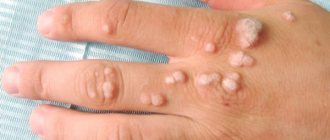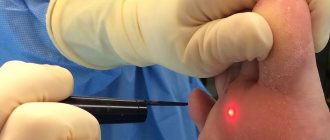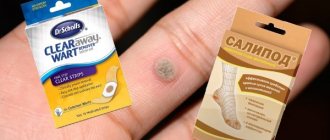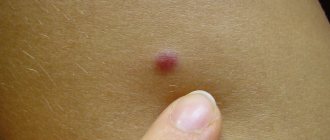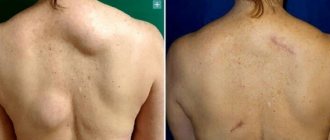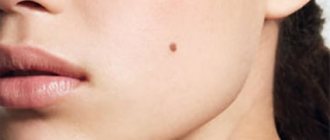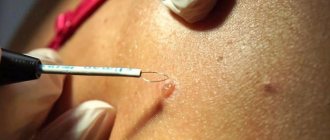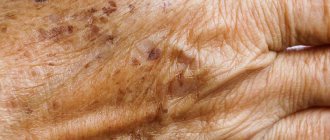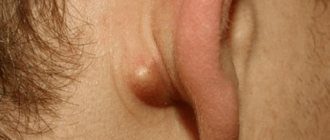When treating a callus, the wound must be cared for more carefully: treat it with the means recommended by the doctor (healing ointments, antiseptic) and bandage it for 7 to 10 days.
At this time, you need to limit the pressure on the treated area. If laser removal of calluses on the toes has been performed, the patient should try to wear comfortable shoes. In this case, the orthopedic option is optional. However, it is better to choose only those manufacturers who take into account all medical standards in their products. Such shoes should be well ventilated.
During the rehabilitation period, patients can use special rings or gel pads. They are needed so that the treated area does not come into contact with anything. Doctors also do not recommend visiting the pool, sauna or bathhouse at this time.
Complete healing after hardware treatment depends on the size and depth of the wound and can occur after 21 days.
Advantages and disadvantages of laser callus removal
This treatment is effective because it allows you to get rid of even the deepest calluses. At the same time, an excellent result, as a rule, can be achieved after just 1 procedure, which lasts only 10 minutes. Other benefits:
- It is painless thanks to local anesthesia.
- There are no scars left on the skin after the laser.
- Hardware removal of calluses is called one of the safest procedures. During this procedure, the doctor works without contact, and the device disinfects the surface being treated.
- The rehabilitation period after laser removal of dry calluses takes place without hospitalization. It doesn't take much time.
The laser technique has many advantages, but patients also highlight several disadvantages. Among them are the high prices for this procedure. During the rehabilitation period, the treatment area requires, although not complicated, daily care.
Reasons for appearance
Corns appear as a result of hyperkeratosis. The stratum corneum of the epidermis thickens due to constant friction or pressure. Later, a rod appears under the layer of dead skin cells. It is this that causes discomfort and pain. Removing calluses at home does not give results, because it is impossible to get rid of the hard core on your own. A callus looks like a grayish or yellow stratum corneum with a depression in the center.
Is it dangerous?
Corns are harmless, but they still need to be removed. There are several reasons to get rid of the growth:
- it causes pain and interferes with walking;
- over time the growth becomes larger;
- the formation can crack, bleed, and become inflamed.
Possible complications and contraindications
Calluses are not removed with a laser if the doctor determines that the patient has an infectious disease. You cannot use light radiation on tissues with pathology if the diagnosis includes:
- oncology;
- epilepsy;
- diabetes mellitus in decompensated form;
- herpes in the treatment area.
Laser treatment is contraindicated during pregnancy and breastfeeding.
The child's tumors are removed only if there is severe pain. To do this, you need the written consent of the parents and the presence of one of them at the procedure. However, doctors recommend, if possible, such treatment from the age of 16.
External and internal causes of callus growth
The most common external source of problems is shoes. It may turn out to be:
- not adjusted to human anatomical standards;
- too small, tight, or with seams protruding inward;
- made from non-ecological materials.
The last point implies the formation inside the shoes of an ideal environment for the proliferation of pathogenic microorganisms. The feet cannot “breathe”, which provokes not only an unpleasant odor, but also painful skin pathologies.
Sometimes the problem is caused by a pair that is too big. Particular care should be taken in selecting specimens for those who already have some problems with the anatomical structure of the lower limb. Only a clinic with a practicing orthopedist will help here.
But giving up shoes completely is also a bad option. Dropsy, which degenerates into calluses, also occurs due to prolonged walking barefoot on a hard surface. If we add to this increased sweating and forgotten rules of personal hygiene, then all the risks of developing skin growths are obvious.
Before sending the patient for laser excision, the specialist will definitely find the cause of the formation of defects. The reasons for their occurrence can be both external and internal factors. In the most advanced clinical situations, several aspects are mixed, which aggravates the situation, prolonging the course of therapy.
Among the most popular internal causes are diseases of fungal or viral origin. That is why it is so important to first make sure that a person does not suffer from such an ailment, and then get rid of the aesthetic defect.
The first potential provocateur is diabetes mellitus. No less often, patients suffering from calluses are also diagnosed with psoriasis, kerotodermatosis, and ichthyosis.
Even flat feet increase the chances of encountering unattractive, rough patches of skin. To successfully treat the disease and simultaneously neutralize growths, you should consult a dermatologist.
Cost of laser callus removal
The cost of therapy depends on the diameter of the pathology. At the medical center they can perform laser removal of calluses at the price:
- about 400 rub. on an area up to 1 mm2;
- 600 rub. – 2 mm2;
- 1000 rub. – 3 mm2.
Each subsequent millimeter will increase the total amount by 400 rubles. As a result, the price of laser callus removal on an area of 10 mm2 will be 3,800 rubles.
Some medical centers indicate the complexity of the procedure in their price list. Patients will pay on average:
- for category 1 – from 2000 to 2500 rubles;
- for category 2 – from 2500 to 3500 rubles;
- for category 3 – from 3500 to 7800 rubles;
- for category 4 – from 5,000 to 8,000 rubles.
Laser removal of core calluses will be more expensive than the treatment of conventional growths.
Preparation and process
How to prepare for the procedure
You don’t have to prepare to remove corns on your feet; you can wash your feet and that will be enough. Only with plantar warts should you think about what shoes to choose so that they do not put pressure on the wounds.
Process description
During the procedure, substances that soften the stratum corneum are first applied to calluses and corns, and time is given for them to take effect. Next, the upper stratum corneum is removed using special milling machines.
What to do after deletion
After removing corns on the feet, the most important thing is to identify the cause from the appearance. First of all, it is necessary to exclude incipient transverse flatfoot. If it is present, then corns and calluses will quickly reappear in the same places, despite changing shoes to looser ones. To correct flat feet, orthopedic insoles, foot braces, orthopedic shoes and surgical treatment are used. Proper prevention of reappearance gives good results for the removal of corns.
Reviews from patients and opinions of specialists
Doctors call laser therapy the safest method. It is much less traumatic than, for example, surgical intervention (excision), but it still gives a good result. Experts recommend not to self-medicate, but to immediately seek qualified advice.
In reviews of the removal of calluses on the feet with a laser, patients note the effectiveness of the method, because it helps to cope even with old pathologies. The healing time of wounds after the procedure largely depends on the size of the treated surface. In some patients, the crusts disappear within 2 weeks; in others, complete recovery lasts for 2 months.
The complaints that are written about in negative reviews include wounds healing too slowly and the inability to step on the foot for a long time. The reason may be a violation of treatment technology or non-compliance with recommendations.
Laser removal of calluses gives good results. At the same time, it does not require special preparation. The procedure lasts no more than 10 minutes and is painless with local anesthesia.
Types of calluses
Content:
- Types of calluses
- External and internal causes of callus growth
- Features of laser removal
- Indications and contraindications
Regardless of what type of skin roughness affected the victim, the reasons for their formation remain the same factors. Often we are talking about prolonged and regular friction and compression of the skin area when wearing shoes that are not adapted to the anatomical characteristics of a person.
The most common type of callus is the water or wet variety. It is so called because it looks like a bubble filled with liquid. Lymph collects under the thin, almost transparent skin. Such sacs with biological fluid can reach impressive sizes, appear in groups and then merge into a single whole.
Some ordinary people try to fight them using an accelerated program - cutting, squeezing or piercing the contents. This does not lead to anything good, but only increases the risk of developing an infectious lesion. This is confirmed by numerous reviews from victims of their own lack of foresight.
The second most common type of skin growth is the so-called dry callus. This is a direct consequence of unqualifiedly treated or excised dropsy - a formation of the first category. A roughness is formed after the bubble bursts or it is pierced with a needle. The remaining skin grows to the bottom of the wet callus, forming a dense new layer.
Over time, the area of dead tissue will increase, which will add dry calluses or expand the lesion. Externally, this pathology is characterized by a dense skin growth, a small lump that initially does not hurt even with pressure, and a yellowish color.
If this was found on the legs between the toes, or on the foot, then this is a reason to immediately make an appointment with a dermatologist. Trying to pick out the seal yourself is strictly prohibited, as the risks of introducing pathogens are too great.
Adding to the problem is the fact that not all people far from medicine are able to correctly distinguish the still relatively harmless classic dry callus from the core version. This is the final stage of degeneration of the keratinized skin area. The main feature of this pathology is penetration into the deeper layers of the skin. When trying to cut off the upper part of the growth, the patient, in the most successful scenario, will only get rid of the cap. The root, which affects the cells to a depth of several centimeters, will remain inside.
The rod can only be dealt with by radical methods, the most optimal of which was the use of laser equipment. Thanks to a precise, almost “jewelry” effect on the lesion, the doctor will be able to excise the skin tubercle along with the extensive root system.
No other method provides such high results, since with the help of a laser it is possible to reach even a long root. If at least the fate of the branched system remains inside, then in the future it will come back to haunt the same place. Because of this, traditional surgical intervention cannot boast of increased productivity.
A strongly ingrown root first provokes damage to the nerve endings. Over time, its effect on surrounding tissues becomes even stronger, because instead of unpleasant sensations, the patient will experience unabated pain. Cleaning with a pumice stone or going to a pedicurist to superficially scratch off a specific corn will only bring partial relief.
The price of laser services varies depending on the area of the lesion, the depth of root germination, and the type of specific callus. Also, the cost may be affected by the inclusion of an auxiliary stage such as additional examinations.
You should not refuse the recommendation to undergo tests, since the dermatologist must first understand the true cause of the disease. A particularly relevant decision to undergo clinical trials will be for those victims who constantly face similar problems on their toes.
The growths make themselves felt in different places, causing inconvenience. If this happens, then this indicates internal malfunctions in the body. Not a single super-powerful laser will help prevent relapses in this situation unless treatment is started from the inside.
The doctor will be able to accurately answer the question of how much the procedure costs only after calculating the need to use local anesthesia. Regardless of what type of pain relief medication is chosen, a real pro will first conduct a preliminary allergy test. This will avoid the possible onset of anaphylactic shock.
Advantages of SM-Clinic
Our medical center employs some of the best specialists in St. Petersburg. The latest equipment is used to conduct research and any interventions. We have our own laboratory. With us you can undergo an examination and take the necessary tests quickly, comfortably, and without queues. Recovery after the procedure takes place within one day. The clinic has a hospital with comfortable rooms where patients are accommodated if necessary. You can make an appointment by phone or online.
Equipment
Lotions and creams for softening the stratum corneum come in different compositions. Usually, they not only soften the stratum corneum, but also help fight germs. To remove corns on the foot, pedicure cutters with sterile attachments are used. In cases where the corns are actually plantar warts, deeper removal may be necessary, then a radio wave or laser device is used. Special stopometers can be used to diagnose flat feet and select orthopedic insoles.
Prices
Price (rub.)In installments* (rub.)Excision/removal of benign formations of the skin and mucous membrane, category I. complexity 2550—Excision/removal of benign formations of the skin and mucous membrane, category II. complexity 4050—Excision/removal of benign formations of the skin and mucous membrane, category III. complexity7800—Excision/removal of benign formations of the skin and mucous membrane in a generalized process (1 zone)19500—* You can read more about the conditions here - Treatment on credit or in installments
The cost is preliminary. The exact cost of the operation can only be determined by a surgeon during a free consultation.
